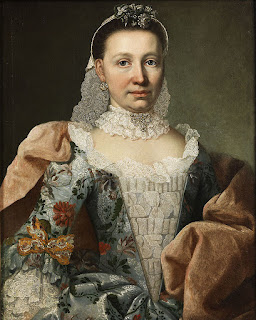For a long time, tailors made outer clothes for both men and women, while female seamstresses and home sewers made linen undergarments. Then in late 17th century France and Britain, female
couturières and mantua makers got the right to sew mantuas and other women's clothes. The tailors continued to make stays, stiff-bodied court gowns, and riding habits for women, in addition to menswear.
Similar changes took place in Germany and Sweden too, but the tailors there hung on much longer to the privilege to make women's clothes, so the transition from tailors to dressmakers was delayed for a century or more. In the meantime, tailors in the German tradition continued to develop cutting methods for women's clothes as well as men's; J.S. Bernhardt's two-volume book from 1810‒1811 is the earliest and the most well-known printed example. Sewing techniques also differ between extant garments, depending on if they've been made in a tailor's or dressmaker's tradition.





